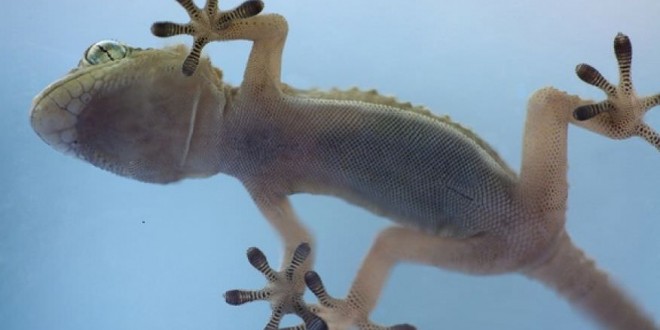New research shows just how stick geckos’ feet are. Scientists say each of the hairs on each of their toes is sticky, allowing them to stick to surfaces and climb walls with ease.
In fact, they’re able to so easily stick and unstick their feet that they can run across any surface at a rate of 20 body lengths per second.
The research conducted by the Oregon State University showed that there was a amazing mechanism in the toes of geckos that used tiny, branched hairs called “seta” that could instantly turn their stickiness on and off, and even “unstick” their feet without using any energy.
Alex Greaney, an assistant professor in the OSU College of Engineering said that these were really enthralling nanoscale systems and forces at work and it was based not just on the nature of the seta but the canted angles and flexibility geckos had, and ability to work under a wide range of loading conditions.
Greaney said that it was the minimal amount of energy expended in the whole process, as a gecko could race across a ceiling with millions of little hairy contact points on its feet turning sticky and non-sticky in a precisely integrated process.
Geckos’ feet are, by default, non-sticky, but the stickiness can be activated by a small shear force to produce this surprisingly tough form of adhesion.
Agencies/Canadajournal
 Canada Journal – News of the World Articles and videos to bring you the biggest Canadian news stories from across the country every day
Canada Journal – News of the World Articles and videos to bring you the biggest Canadian news stories from across the country every day



